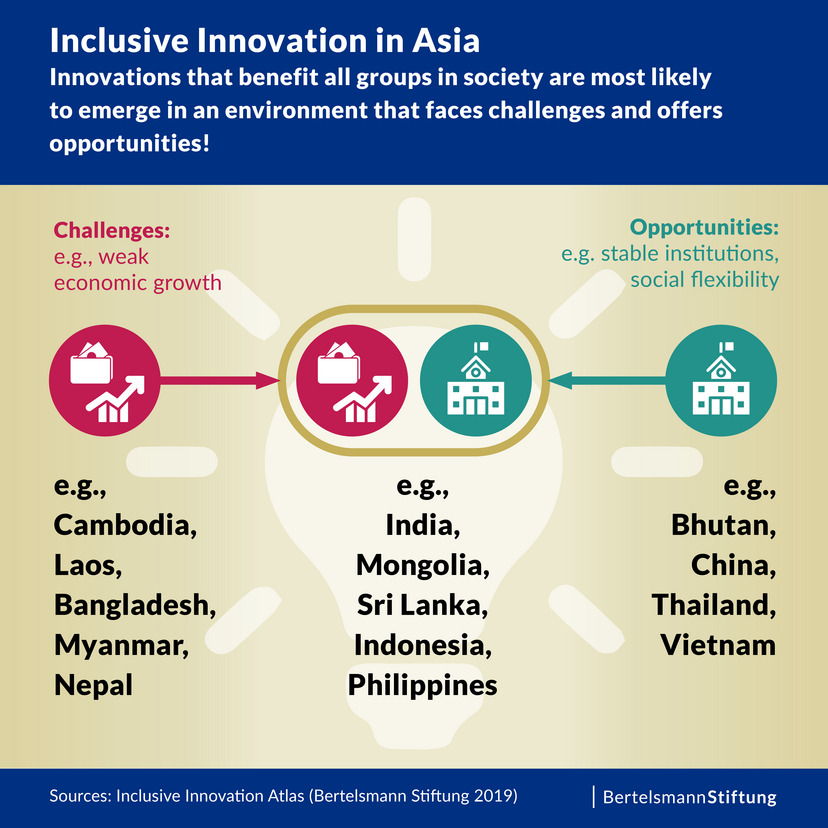The comparative study "Inclusive Innovation Atlas" measures for the first time Asian countries' potential for inclusive innovation – that is, their capacity for a sustainable social and economic development that benefits all segments of society without doing harm to the environment. In short, as the study's experts emphasize, the point is to do "more for more for less."
The study examines 21 countries and compares them according to 72 indicators. The study shows that a country must have two things in place in order for inclusive innovation to take off.
On the one hand, inclusive innovation must be driven by certain social, economic or ecological pressures to address specific problems. On the other, a country must feature factors that enable inclusive innovation, such as stable institutions.
![[Translate to English:] eine junge Asiatin sitzt auf der Ladefläche eines LKW, sie hat einen Laptop auf dem Schoss](/fileadmin/files/_processed_/a/7/csm_123094425AdobeStock_238762744_KONZERN_ST-DA_c8ddf106e1.jpg)



![[Translate to English:] Container auf einem Schiff im Meer](/fileadmin/files/_processed_/f/7/csm_AdobeStock_82796029_KONZERN_ST-DA_Original_96069_02_38ff99c958.jpeg)



